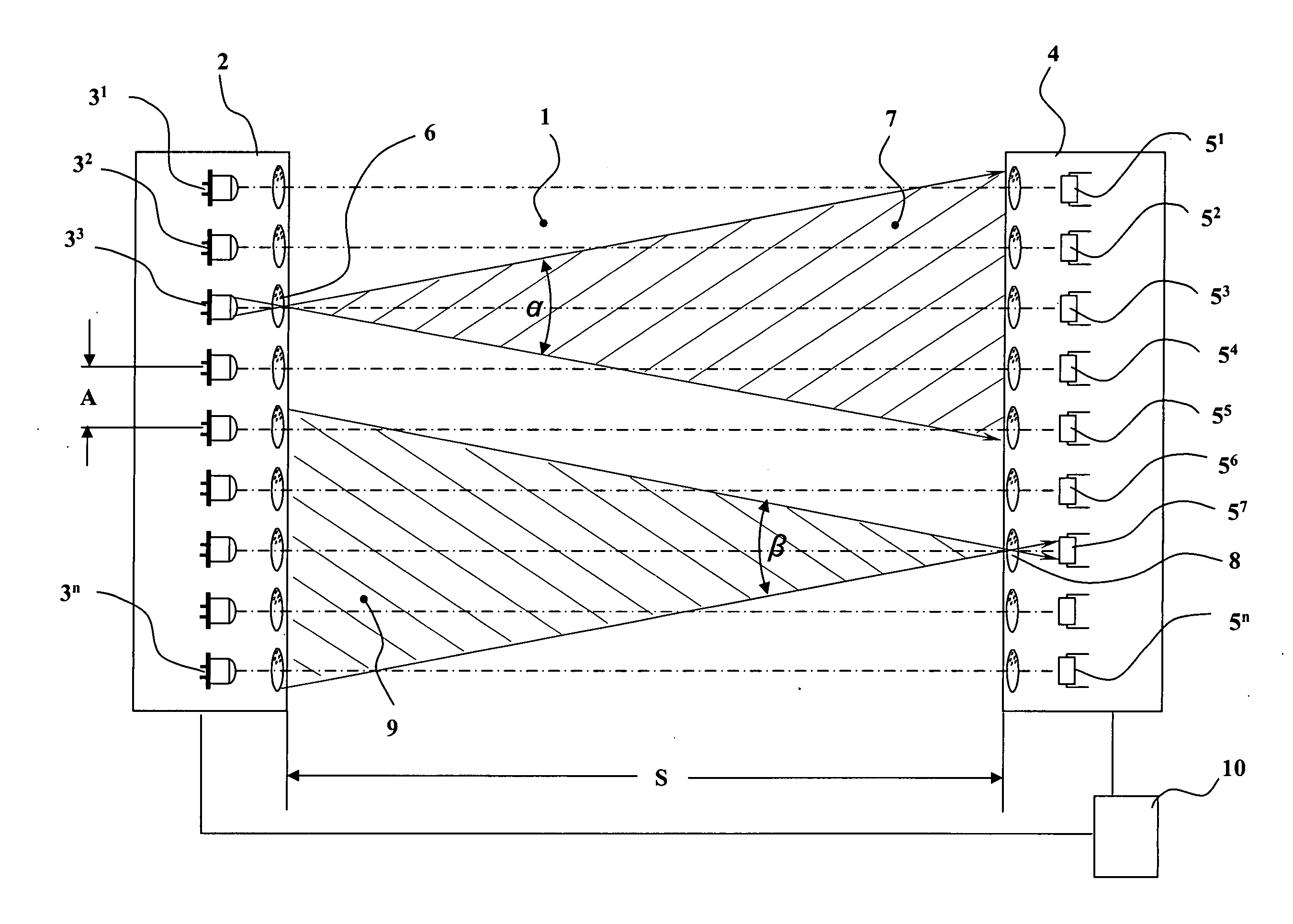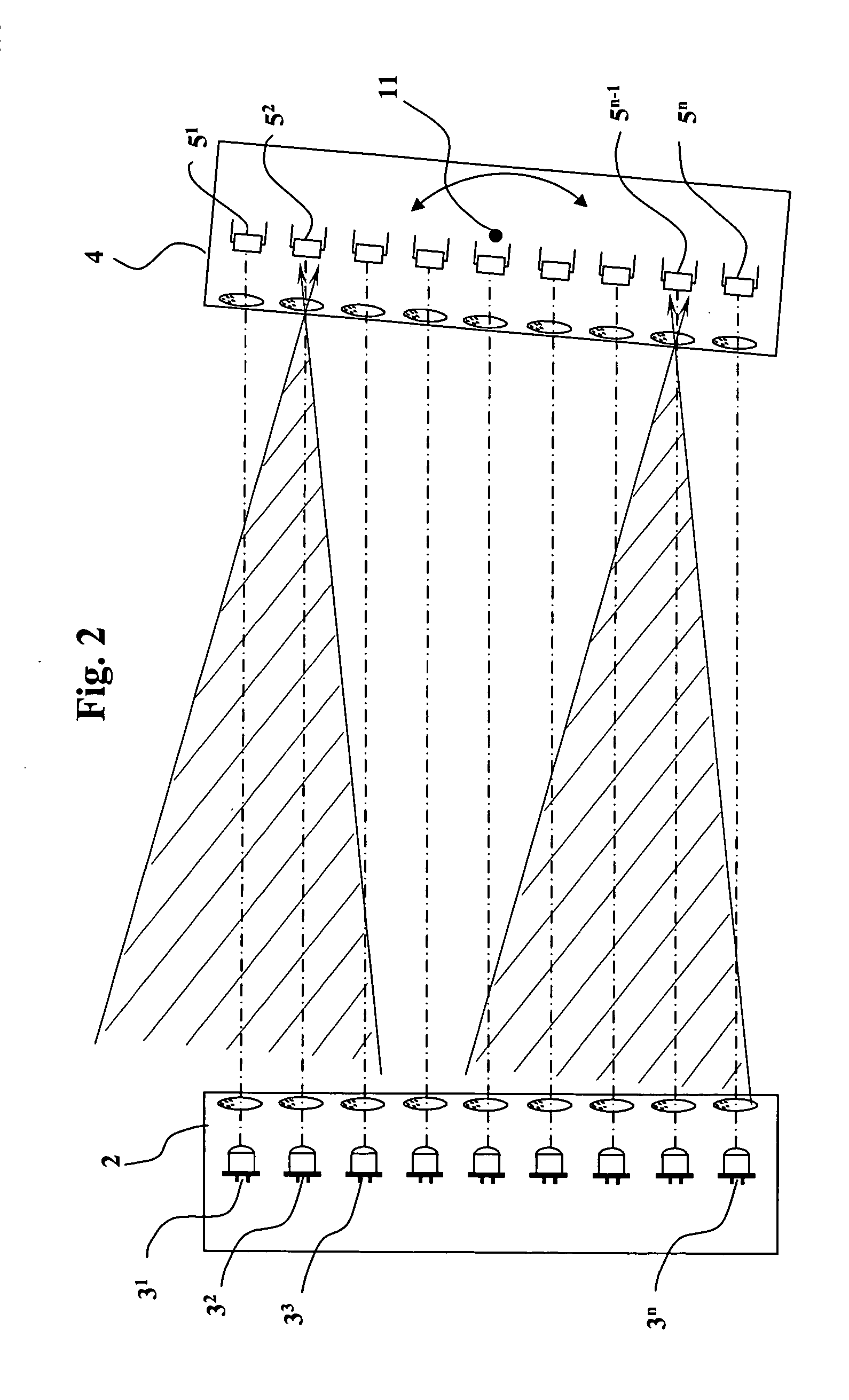Method and apparatus for monitoring surfaces
a technology of surface monitoring and apparatus, applied in the direction of optical detection, electrical equipment, instruments, etc., can solve the problems of reducing the signal strength or level generated by the light receiver, increasing increasing the distance, so as to enhance the accuracy of determining the width of the monitoring field, prolong the time interval, and reduce the efficiency of the individual optoelectronic components
- Summary
- Abstract
- Description
- Claims
- Application Information
AI Technical Summary
Benefits of technology
Problems solved by technology
Method used
Image
Examples
Embodiment Construction
[0018] Referring to FIG. 1, on one side of a monitoring field 1, several light emitters 31, 32, 33 to 3n, arranged alongside each other, are in an emitter housing 2. At the opposite side of the monitoring field 1, several light receivers 51, 52, 53 to 5n are arranged alongside each other in a receiver housing 4. Transmission optics 6 are arranged in front of each light emitter 3 and shape the emitted light directed into the monitoring field into an emitter cone 7 with an emitter cone angle α A receiving lens 8 is positioned in front of each light receiver 5 and concentrates the light arriving within a receiving cone 9, which has an angle β, on the light receiver.
[0019] In the monitoring mode, i.e. when the monitoring field 1 is monitored to detect intruding objects, a control unit 10 activates the light emitter 31 and the light receiver 51 in a pair-wise fashion. During this brief time interval, only the light emitter 31 transmits light into the monitoring field 1, and at the same ...
PUM
 Login to View More
Login to View More Abstract
Description
Claims
Application Information
 Login to View More
Login to View More - R&D
- Intellectual Property
- Life Sciences
- Materials
- Tech Scout
- Unparalleled Data Quality
- Higher Quality Content
- 60% Fewer Hallucinations
Browse by: Latest US Patents, China's latest patents, Technical Efficacy Thesaurus, Application Domain, Technology Topic, Popular Technical Reports.
© 2025 PatSnap. All rights reserved.Legal|Privacy policy|Modern Slavery Act Transparency Statement|Sitemap|About US| Contact US: help@patsnap.com



